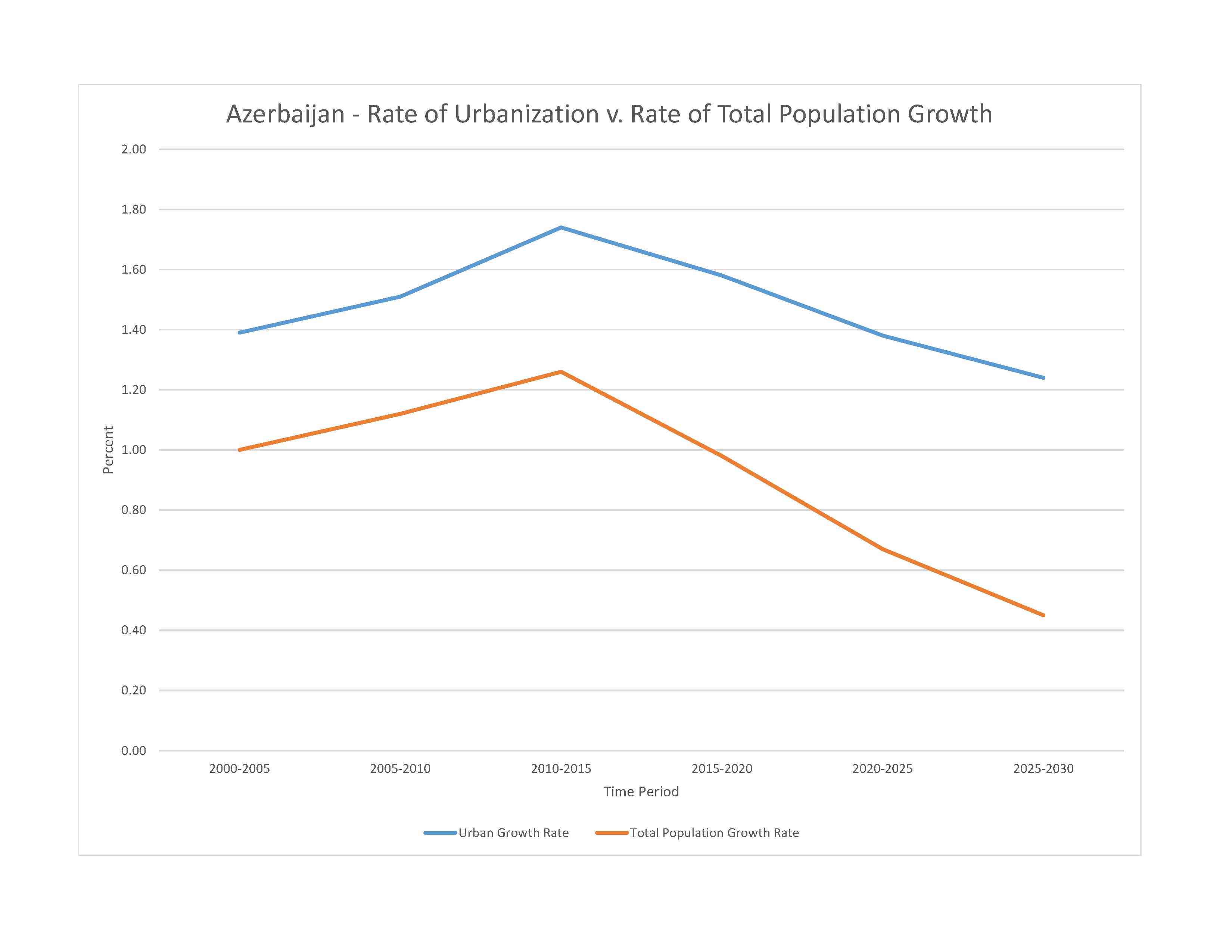
10,420,515 (2023 est.)
noun: Azerbaijani(s)
adjective: Azerbaijani
Azerbaijani 91.6%, Lezghin 2%, Russian 1.3%, Armenian 1.3%, Talysh 1.3%, other 2.4% (2009 est.)
note: Nagorno-Karabakh, which is part of Azerbaijan on the basis of the borders recognized when the Soviet Union dissolved in 1991, was populated almost entirely by ethnic Armenians; Azerbaijan has over 80 ethnic groups
Azerbaijani (Azeri) (official) 92.5%, Russian 1.4%, Armenian 1.4%, other 4.7% (2009 est.)
major-language sample(s):
Dünya fakt kitabı, əsas məlumatlar üçün əvəz olunmaz mənbədir (Azerbaijani)
The World Factbook, the indispensable source for basic information.
note: Russian is widely spoken
Muslim 97.3% (predominantly Shia), Christian 2.6%, other
note: religious affiliation for the majority of Azerbaijanis is largely nominal, percentages for actual practicing adherents are probably much lower
Azerbaijan’s citizenry has over 80 ethnic groups. The far eastern part of the country has the highest population density, particularly in and around Baku. Apart from smaller urbanized areas, the rest of the country has a fairly light and evenly distributed population. Approximately 57% of the country’s inhabitants lives in urban areas. While the population is continuing to grow, it is in the early stages of aging. The declining fertility rate – which has decreased from about 5.5 children per woman in the 1950s to less than the 2.1 replacement level in 2022 – combined with increasing life expectancy has resulted in the elderly making up a larger share of Azerbaijan’s populace. The percentage of elderly residents and the slowed growth and eventual shrinkage of the working-age population could put pressure on the country’s pension and healthcare systems.
0-14 years: 21.78% (male 1,192,608/female 1,077,302)
15-64 years: 69.64% (male 3,619,341/female 3,637,494)
65 years and over: 8.58% (2023 est.) (male 356,184/female 537,586)
total dependency ratio: 44.2
youth dependency ratio: 34.7
elderly dependency ratio: 9.7
potential support ratio: 10.3 (2021 est.)
total: 33.8 years (2023 est.)
male: 32.2 years
female: 35.4 years
0.43% (2023 est.)
11.5 births/1,000 population (2023 est.)
6.8 deaths/1,000 population (2023 est.)
-0.4 migrant(s)/1,000 population (2023 est.)
highest population density is found in the far eastern area of the country, in and around Baku; apart from smaller urbanized areas, the rest of the country has a fairly light and evenly distributed population
urban population: 57.6% of total population (2023)
rate of urbanization: 1.38% annual rate of change (2020-25 est.)
note: data include Nagorno-Karabakh

2.432 million BAKU (capital) (2023)
at birth: 1.15 male(s)/female
0-14 years: 1.11 male(s)/female
15-64 years: 1 male(s)/female
65 years and over: 0.66 male(s)/female
total population: 1 male(s)/female (2023 est.)
24 years (2019 est.)
41 deaths/100,000 live births (2020 est.)
total: 11.9 deaths/1,000 live births (2023 est.)
male: 13.8 deaths/1,000 live births
female: 9.7 deaths/1,000 live births
total population: 74.9 years (2023 est.)
male: 72.4 years
female: 77.8 years
1.69 children born/woman (2023 est.)
0.78 (2023 est.)
N/A
improved: urban: 100% of population
rural: 93.3% of population
total: 97.1% of population
unimproved: urban: 0% of population
rural: 6.7% of population
total: 2.9% of population (2020 est.)
4.6% of GDP (2020)
3.17 physicians/1,000 population (2019)
4.8 beds/1,000 population (2014)
improved: urban: 100% of population
rural: N/A
total: N/A
unimproved: urban: 0% of population
rural: N/A
total: (2020 est.) NA
19.9% (2016)
total: 1.38 liters of pure alcohol (2019 est.)
beer: 0.36 liters of pure alcohol (2019 est.)
wine: 0.06 liters of pure alcohol (2019 est.)
spirits: 0.94 liters of pure alcohol (2019 est.)
other alcohols: 0.01 liters of pure alcohol (2019 est.)
total: 24% (2020 est.)
male: 47.9% (2020 est.)
female: 0.1% (2020 est.)
4.9% (2013)
62.9% (2023 est.)
4.3% of GDP (2020 est.)
definition: age 15 and over can read and write
total population: 99.8%
male: 99.9%
female: 99.7% (2019)
total: 14 years
male: 13 years
female: 14 years (2021)
NOTE: The information regarding Azerbaijan on this page is re-published from the 2024 World Fact Book of the United States Central Intelligence Agency and other sources. No claims are made regarding the accuracy of Azerbaijan 2024 information contained here. All suggestions for corrections of any errors about Azerbaijan 2024 should be addressed to the CIA or the source cited on each page.
This page was last modified 04 May 24, Copyright © 2024 ITA all rights reserved.